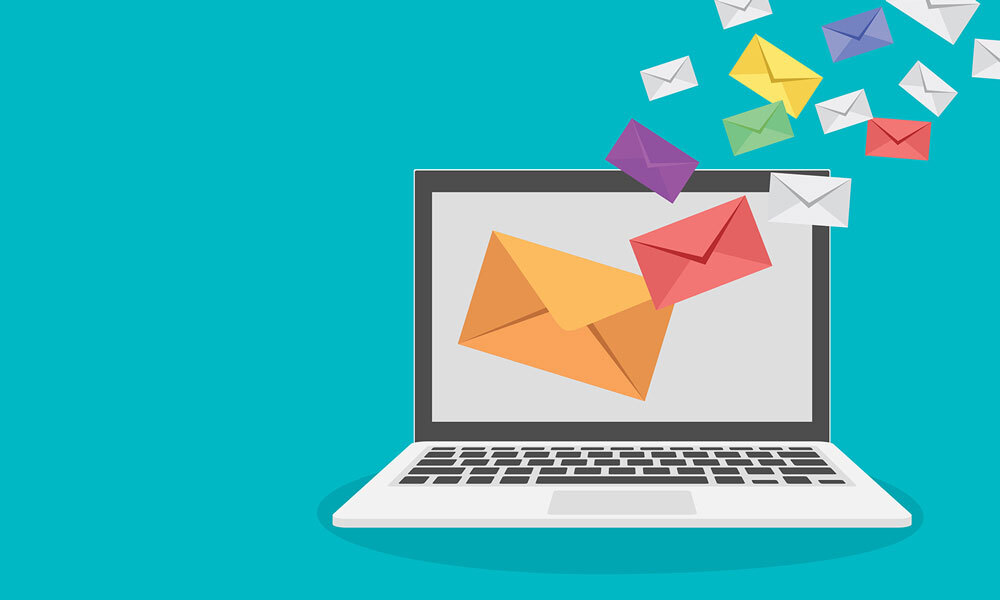
The State of Email: Five Email Trends to Watch in 2021
From visual tricks to added interactivity to integrating user-generated content, there are a lot of ways for associations to leverage the power of email in 2021. Read on to catch up on the latest trends.
Even with all the options out there—video, social media, immersive websites—email has remained one of the most important ways for associations to reach their members.
But competition is fierce, as plenty of other organizations’ newsletters are fighting for your readers’ attention first thing in the morning. (According to one study, the average person gets more than 120 business emails each day.)
To stand out, you need to be willing to try new things. Here are five email trends that associations should keep an eye on, and potentially experiment with, in the year to come:
1. Interactive elements
You’ve heard it a thousand times, but it remains true: Email is often constrained by email clients’ limited parameters, which means that the boundaries of what the medium can do will only stretch so far.
While tools like AMP for Email have promised progress, these offerings are still years away from being widely used.
But digital marketers still have plenty of options. A blog post from Email on Acid notes that interactive techniques such as image rollovers, quizzes, and even surveys add panache and are compatible with many platforms. (Email on Acid even mentions a scratch-off-style effect, in case you really want to get fancy.) These snazzy tactics are possible in many email clients, particularly Apple Mail-based clients and even Gmail. But if your users are stuck with Microsoft Outlook, they may miss out.
“Always provide a fallback image or design for subscribers opening your email on a mobile device or a client that doesn’t support interactive elements,” writes Hanna Kuznietsova, the chief content officer at Stripo.email.
2. Workflow optimization
Whether it’s a matter of curating content more efficiently, automating the use of data to personalize messages, or optimizing processes so building messages takes less time, there are ways to make your email production workflow less painful.
In a blog post for the email provider MailerLite, email marketer Kevin George recommends creating content calendars for messages that aren’t automated, while building out multiple workflows for the various kinds of emails that are.
“When defining the email production workflow, make sure you account for the different types of email campaigns and automated workflows you have set up for them individually,” writes George, of the custom email design firm Email Uplers. “This will help you nurture opportunities thoroughly and allow you to cater to the needs of the target audience without compromising on the quality or speed of the campaigns.”
3. The rise of dark mode
While not widespread in emails yet, dark mode—a low-light version of an operating-system interface—has gained popularity in many computer operating systems, including MacOS, Android, and iOS.
Since Apple has been a driving force behind this trend, dark-mode functionality has translated to email clients as well—and as Litmus reports, Apple’s support for dark mode in its desktop and iOS email clients has helped to build momentum for such support in email messages. Heck, even the mobile versions of Gmail and Outlook support it now.
While not a necessity—certainly, you’ve gotten by without it until now—dark mode can help avoid rendering issues for users who have the feature turned on. It’s also a boon for accessibility.
“One of the biggest benefits of Dark Mode is its assistance with reducing eye strain for users in low-light conditions or for other personal reasons,” Litmus’ Alice Li writes. “If your subscribers are making that conscious decision to view emails in dark mode, it’s best to respect that.”
Plus, adding such support helps prevent Google or Microsoft from doing it for you—and, in the process, messing up your hard work.
4. The growing popularity of web fonts
Much like dark mode and interactive elements, web fonts aren’t everywhere, so you need some fallbacks. But where they do exist—particularly clients like iOS Mail and Thunderbird—they stand out.
“Web fonts can be used for many things from enhancing the aesthetic beauty of an email to setting the mood for your message,” the email provider Emma writes in a blog post. “After all, communication is not just about the message, but it also involves how the message is conveyed. And for written media like email, looks (yes, including typography) enhance your message.”
While web fonts do not yet have universal support, designing for them now can supply a more elegant look for a surprising number of users, particularly those on mobile clients.
5. A push for user-generated content
Emails promote your association’s messages, but incorporating voices beyond your own can be a cost-effective way to spur engagement. It can be easier and less costly than building out visuals in your emails, and engaging with individuals beyond social media can impart intimacy.
“Social networks have become the go-to place for people to post about the brands they love,” Stackla’s Megan DeGruttola writes on the Campaign Monitor blog. “But, to amplify the collective enthusiasm of your customers’ social posts, you need to start cultivating that community beyond social platforms.”
Thanks to their member communities, associations are well positioned to leverage user-generated content. This base creates a loop: Associations can draw on their members’ perspectives and showcase them through activations like regular polls and prompts for members to share their thoughts, and in turn that content encourages ongoing engagement.
This is the first part of a three-part email series. In part two, we discussed what it takes to add automation to your email workflow. And in part three, we discussed the power of targeting a niche audience with a newsletter.
(DenEmmanuel/iStock/Getty Images Plus)






Comments